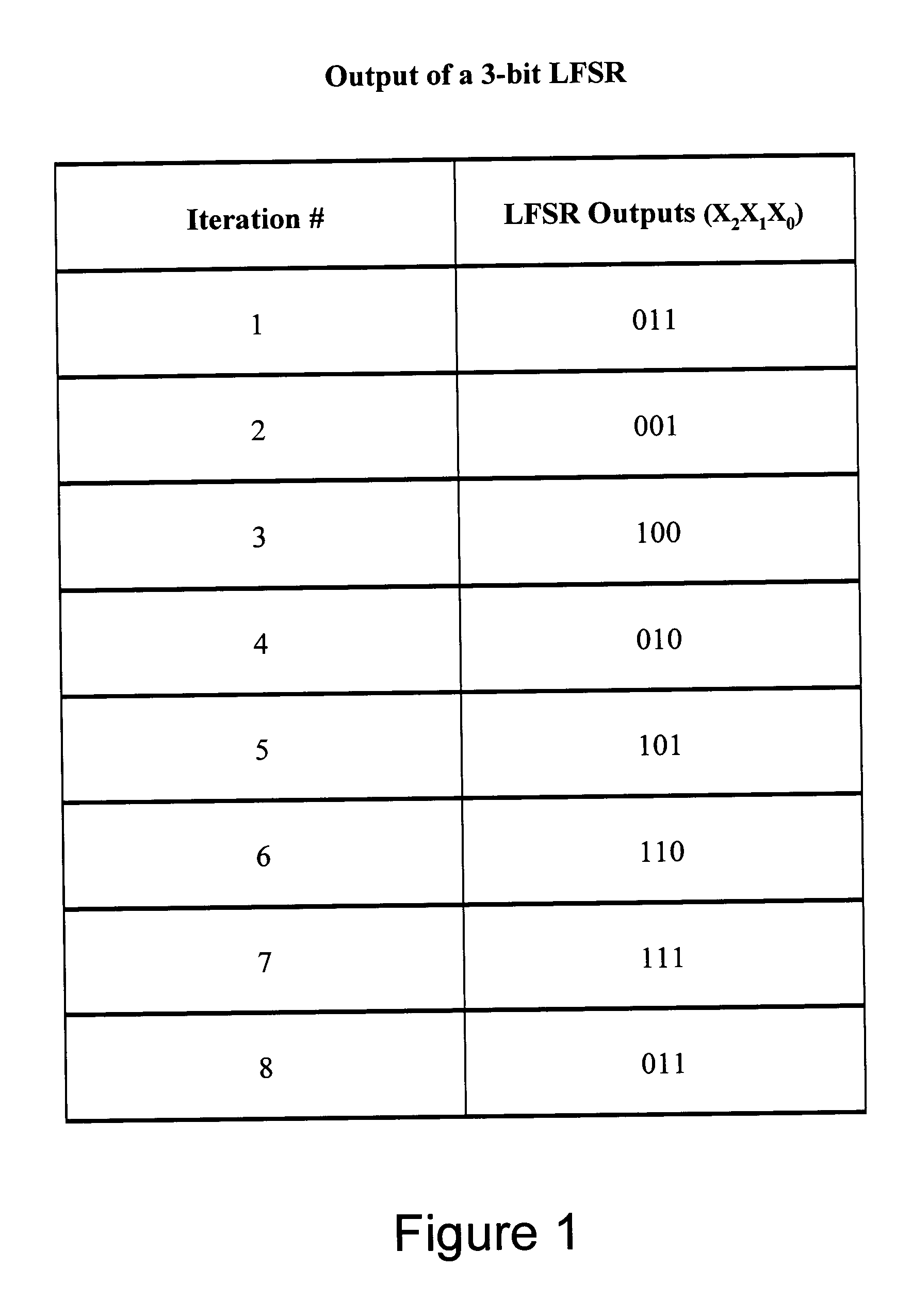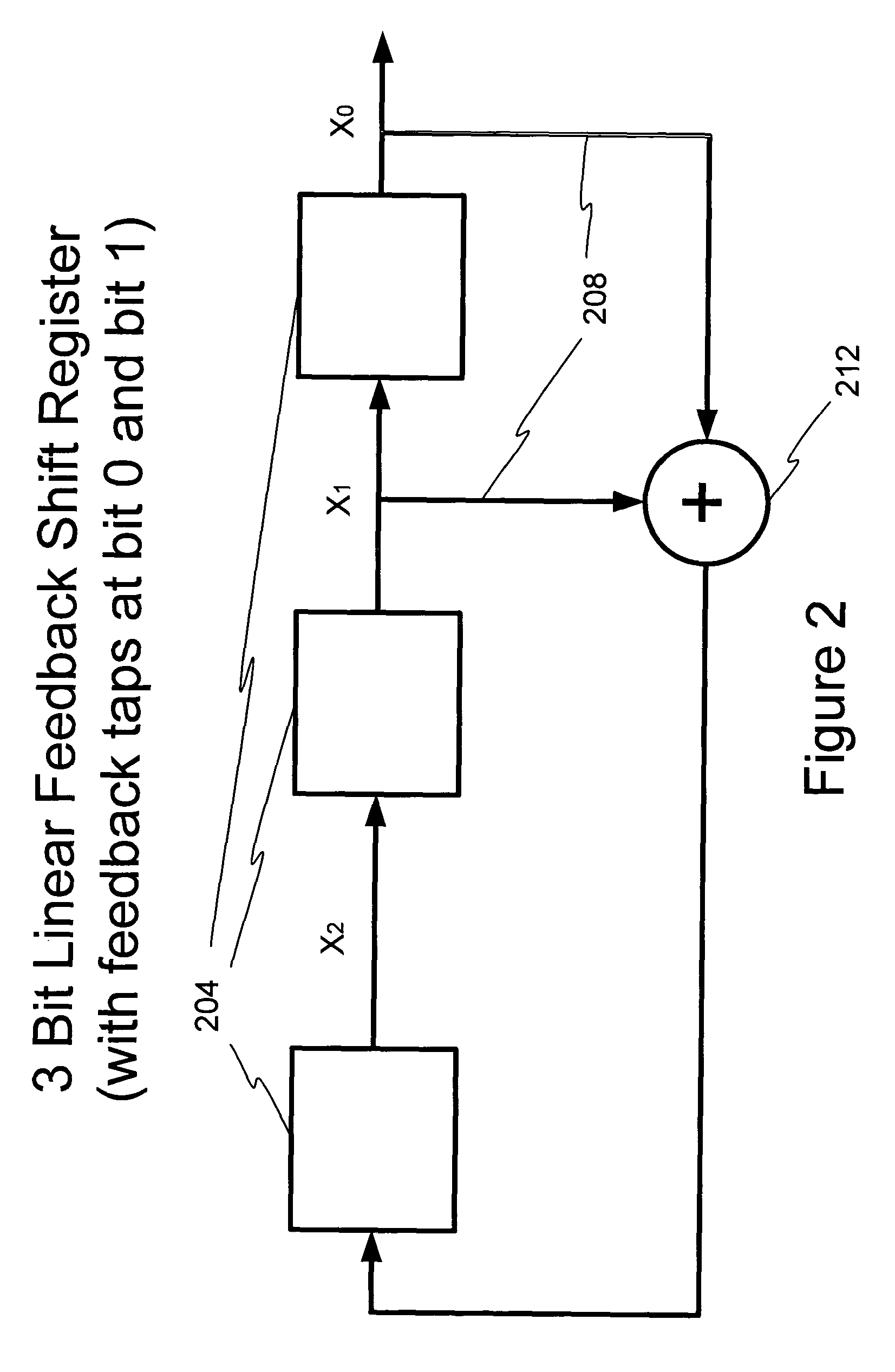Pseudo-random number generation based on periodic sampling of one or more linear feedback shift registers
- Summary
- Abstract
- Description
- Claims
- Application Information
AI Technical Summary
Benefits of technology
Problems solved by technology
Method used
Image
Examples
Embodiment Construction
[0023] Aspects of the present invention may be found in a system and method to generate pseudo-random numbers that are used as encryption keys or seed values in cryptographic applications. The pseudo-random number generator (PRNG) is implemented using one or more linear feedback shift registers (LFSR) that employ a number of techniques to conceal the behavior of its internal parameters or its underlying algorithm. In one embodiment, the outputs of an LFSR are sampled periodically, instead of consecutively at the next iteration, to determine the encryption keys used in the cryptographic application. In one embodiment, the one or more distinct LFSRs are switched periodically after a number of iterations, wherein each of the one or more distinct LFSRs is differentiated by a unique set of feedback parameters or taps. In one embodiment, nonlinear operators are used to map encryption keys generated by a LFSRs to outputs to make it more difficult for a cryptanalyst to decipher the algorith...
PUM
 Login to View More
Login to View More Abstract
Description
Claims
Application Information
 Login to View More
Login to View More - R&D
- Intellectual Property
- Life Sciences
- Materials
- Tech Scout
- Unparalleled Data Quality
- Higher Quality Content
- 60% Fewer Hallucinations
Browse by: Latest US Patents, China's latest patents, Technical Efficacy Thesaurus, Application Domain, Technology Topic, Popular Technical Reports.
© 2025 PatSnap. All rights reserved.Legal|Privacy policy|Modern Slavery Act Transparency Statement|Sitemap|About US| Contact US: help@patsnap.com



